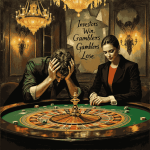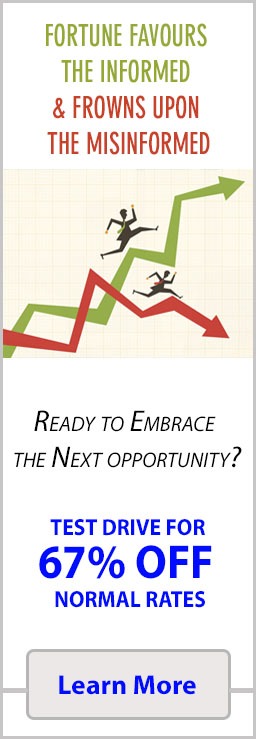The Road to Success: Defying the Masses in Crowd Behaviour
Sept 28, 2025
The Red Room: Panic as Overture
The room was red. Screens bled numbers like open veins. March 2020. Traders stared, frozen between disbelief and panic, as indices collapsed in a choreographed freefall. Every headline screamed apocalypse, every pundit amplified the echo. While the crowd shouted, “This is the end,” a quieter group read the tape differently. They saw fear’s parabolic arc cresting. They waited for the scream to crack into silence. Then, as volatility climaxed, they struck. Weeks later, while the masses still flinched at shadows, those few had already loaded up on what panic had discounted.
Crowd behaviour doesn’t just shape markets. It is the market. Price is the consequence; emotion is the cause. What appears to be chaos is often repetition disguised in new forms. Each crisis tells the same story with different actors: collective euphoria builds castles in the sky, while collective despair torches the ruins. The difference between winners and casualties lies not in IQ but in psychological distance. The majority participate in the play; the minority write the script.
Markets are not rational puzzles waiting to be solved by better equations. They are psychological furnaces. Every bubble and crash is a combustion event powered by belief, denial, and momentum. In the late 1990s, belief reached messianic levels. Startups with no revenue were treated like empires in waiting. “The Internet changes everything,” they said. And it did—but not in the way speculators imagined. When the fever broke, $6.2 trillion evaporated. For most, it was ruin. For a prepared minority, it was a payday.
They had read the crowd’s conviction as a contrarian signal, not a chorus to join.
Law One: Certainty Marks the Apex
This is the first law of mass psychology: the crowd’s certainty often marks the apex of the move. Herds don’t turn quietly; they stampede in reverse. A moving herd has momentum but no memory. Each cycle is treated as unprecedented, even though the emotional choreography is ancient. People chase heat, flee cold, and forget both as soon as the next frenzy arrives.
To navigate markets, you don’t ask what the crowd is doing. You ask how violently it believes it’s right. Conviction, not consensus, reveals the turning point. When the crowd reaches emotional saturation—when every taxi driver has a stock tip, when every headline promises easy riches—you’re watching the final act. Similarly, when despair becomes universal, when capitulation oozes through price and language, reversals lurk nearby.
The Furnace of Belief
History is brutal in its consistency. The 2008 real estate collapse was never about subprime alone. It was about belief: “Real estate never falls.” It did. Hard. The GameStop mania of 2021 wasn’t strategic brilliance. It was mass hysteria in meme format. Early wolves feasted; latecomers became carrion. These episodes are not anomalies—they are market reflexes.
Patience, in this context, is not passive. It’s tactical warfare. While the mob equates speed with intelligence, the strategic investor understands that inaction during hysteria is an action. You don’t chase a stampede; you observe its trajectory, wait for the exhaustion point, and enter as the noise collapses into silence. Research from NBER shows patient investors outperform reactive ones by wide margins, especially during volatility spikes. Emotional capital is finite. Those who burn it in the storm have nothing left when the real opportunities arrive.
If mass emotion fuels the fire, the media is the bellows. Financial media doesn’t illuminate; it amplifies. In downturns, it becomes a factory of doom, shovelling panic into headlines. In rallies, it paints utopias with careless brushstrokes. During the COVID crash, charts quietly signalled accumulation while headlines screamed collapse. A few noticed. Most obeyed. The AI boom that followed priced a decade’s worth of hope into months. Both phases were predictable—if you watched emotion, not anchors.
Law Two: Narrative Vectors Snap Violently
This brings us to the second law: narrative vectors distort price longer than logic allows, but when they reverse, the snapback is violent. Price doesn’t drift gently back to “fair value.” It ricochets, dragging believers into the undertow. Those who surf narratives drown with them—those who measure emotional direction position for the turn.
The crowd thinks in binaries. Bull or bear. Up or down. Safe or dangerous? The market, however, is a paradox engine. It rewards those who hold contradictions in tension: optimism wrapped in paranoia, caution laced with aggression. Tactical investors thrive in these fractures. They identify when price and sentiment diverge—when technical strength meets emotional despair, or when price levitates on manic enthusiasm without structure beneath it. These contradictions are where edges are born.
And here is where satire creeps in, not as ornament but as scalpel. Watch the dopamine junkies refreshing tickers like lab rats hammering levers. Watch the pundits who claim divine foresight after each move they missed in real time. Observe the cyclical amnesia that turns last month’s villains into this month’s prophets. Markets are casinos for those who confuse thrill with edge. They shout “to the moon” and later whisper, “How did this happen?” The answer, of course, was in their reflection all along.
Mass psychology is a mirror. Most investors, unwilling to look, decorate it with lines—RSI, MACD, moving averages—hoping the reflection will change if the chart looks fancier. Technical indicators are tools, not talismans. RSI oversold means nothing unless it coincides with peak panic. MACD crossovers are noise if crowd sentiment is euphoric. The tactical investor reads emotion through price, not the other way around.
Underneath the noise, sentiment cycles beat like a hidden drum: Disbelief → Euphoria → Complacency → Denial → Panic → Capitulation → Disbelief again. This rhythm is more rigid than any earnings calendar. The crowd never learns; it only reacts. Each stage carries its own emotional flavour, each tradable if you have the discipline to stand apart.
Strategic Dislocation: Seeing Through Time
The Road to Success: Defying the Masses in Crowd Behaviour
Strategic dislocation begins when surface panic and deeper structure diverge. In March 2020, daily charts screamed chaos, but weekly charts began to whisper stabilisation. Momentum indicators bottomed even as headlines were still writing obituaries for the market. Monthly structures—the bedrock of belief systems—remained intact. Tactical investors didn’t need clairvoyance. They needed discipline, multi-timeframe vision, and emotional distance. They saw a crowd sprinting blind into the abyss while the market quietly reloaded.
This is the tactical edge: seeing through time. Daily charts capture the emotional twitch, the noise of the mob. Weekly charts reveal whether that twitch aligns with or contradicts the trend. Monthly charts reveal a collective belief, slowly baked into the price. When all three align and the crowd is leaning the other way, you don’t just have a trade. You have an ambush.
Patience sets the trap. Crowd emotion provides the bait. Market structure is the blade.
Contrarianism is often misunderstood. It’s not a reflexive urge to oppose the majority. It’s the calculated use of collective gravity against itself. The tactical investor doesn’t scream “sell” when the crowd buys; he watches conviction peak, lets emotion burn through its fuel, and steps in when exhaustion bends the arc. This requires discipline sharper than hope. Discipline resists the drug of immediate action. It resists joining the chorus. It understands that delay is not weakness; it’s a psychological strike.
History rewards those who act in silence when others scream. In 2008, while financial commentators performed digital funerals for capitalism, disciplined investors accumulated quality assets at fire-sale prices. In 2020, when panic enveloped every glowing screen, those with emotional resilience struck decisively. They weren’t fearless. They were prepared. Fear, handled properly, is not an obstacle; it’s a scalpel.
The mob, meanwhile, repeats its catechism: “This time is different.” It never is. Tulip bulbs, dot-com stocks, real estate bubbles, crypto frenzies—the costumes change, the script does not. Crowd behaviour is astonishingly stable over centuries because human emotions haven’t evolved as quickly as capital markets. Greed and fear still run on the same primitive loops, only amplified now by algorithms and 24/7 media cycles.
This stability is your advantage. Their predictability is your alpha.
Look at the GameStop mania. For a brief moment, a subculture declared war on Wall Street. In reality, it was a sugar rush of collective defiance—spectacular, short-lived, entirely predictable. Early players exited with gains. The mass, intoxicated by narrative, mistook movement for strategy. By the time the price reflected euphoria, the tactical minority had already slipped out the back door.
Hunters and Hunted
Markets are not democratic. They are hierarchical. At the top sit those who understand emotional mechanics. At the bottom swarm those who think narratives can bend reality. Hunters and hunted. The line between them is not information—it’s interpretation.
Interpretation demands non-binary thinking. You must hold optimism and paranoia in one hand, caution and aggression in the other. The crowd seeks simple binaries because binaries feel safe. Tactical investors thrive in ambiguity. They trade not on certainty, but on asymmetry: when the crowd’s emotional position makes their reaction predictable, and the structure offers a reward worth the risk.
This is why tactical patience matters more than brilliant ideas. Ideas are cheap. Timing is expensive.
The Transfer Point
The climax of every cycle follows the same rhythm. The crowd piles in at the point of maximum narrative strength, mistaking loudness for truth. Emotional saturation builds like pressure in a sealed chamber. Then something shifts—a technical non-confirmation, a sentiment divergence, an unglamorous structural detail—and the chamber snaps. Prices cascade. Panic feeds on itself. The very hands that once lifted the market now trample each other in retreat. Tactical investors, waiting in the shadows, harvest what hysteria has marked down.
This is not cynicism. It’s realism.
To fear crashes is to misunderstand the game. Crashes are where edges are forged. They are the transfer points where emotional capital leaks from the crowd into prepared hands. Doomsday prophets shout for attention; hunters sharpen their knives.
The Final Choice
The final choice is simple. You can be part of the mob, or you can profit from it. You can react, or you can anticipate. You can chase dopamine through every tick, or you can wait with cold patience for the mob to hand you opportunity on a platter.
The masses are not dumb. They are human. They crave safety, confirmation, and a sense of belonging. These instincts make them reliable participants in a game designed to reward emotional distance. The tactical investor uses these instincts not to mock them, but to build positions where emotion guarantees liquidity.
When the crowd chants “this time is different,” the hunter smiles. He has already moved on.
Adapt or perish. There are no other options.
Discover Exceptional and Informative Reads















